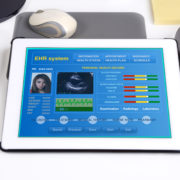What’s Driving the Market Growth of Orthopedic Software?
It’s clear that medical software has been a game-changer for so many organizations, which is part of the reason why orthopedic software is expected to be worth close to $386 million by 2023. This explosive growth has caused a lot of speculation about where the industry is headed and why. Even though the transitions have not always been smooth, see why the trends only point in one direction.
The Growth of the Industry
The global market saw a total of $250.9 million poured into orthopedic software, which is a clear sign that the right computer programs can help professionals around the world do their jobs better. New applications, products, and services are constantly being introduced, and software can be now be used to communicate with everyone from the patient to the physical therapist to the attending physician. Nursing homes, surgery centers, and independent offices alike rely on software to get them through the day.
The templates and tools make it easier to plan treatments, bill patients, and store information (including visual aids) about the patient. With the rise in both the elderly population and surgery techniques, the demand is only expected to continue rising for at least the next few years.
Public Perception
There’s more information about orthopedics to be found than ever before, which has brought more awareness to general health. Everything from arthritis to osteoporosis to lower back pain can all be helped by a specialist, and it can now be done without the intense recovery time normally associated with orthopedic treatments.
Minimally invasive treatments limit the amount of suffering a patient endures after a surgery, and ensures they’re not out of work for weeks at a time. As more people learn how beneficial the scientific breakthroughs can be to them, all medical professionals need to find a way to organize and bill the influx of patients. Just one orthopedic physician sees around 30 patients a day — an average higher than the majority of other practices.
Major Segments
Not every country is embracing orthopedic software at the same rate. Emerging economies are not expected to implement these advanced systems anytime soon. The main growth is really happening in industrial nations that already use computers on a daily basis. Unsurprisingly, the demand is highest in the US and Canada, with Europe right behind North America.
People in Europe seem to be waking up to how much mobility can be regained after knee or hip surgeries. It’s expected that part of the rise in the coming years will be due to China, Japan, and India, as all three major countries start offering more options to patients suffering from common disorders.
However, experts worry that there is not enough familiarity amongst medical staff to fully adopt the software, which may limit growth in these markets.
A World of Options
There is little doubt that the number of software start-ups will increase over the next few years to catch the trade. Look for a company who not only has experience with general software but also has advanced knowledge of the orthopedic industry.
Physicians who make their decisions based solely on price may find that the software only frustrates rather than facilitates the staff. If the software isn’t updated properly, it could make patient information vulnerable to hackers or violate HIPAA or HITECH regulations.
From new ICD codes to billing practices to compliance measures — there’s a lot to keep track of. While the competition will no doubt drive innovation to a certain extent, physicians should be extremely careful about navigating the ever-expanding array of options.











